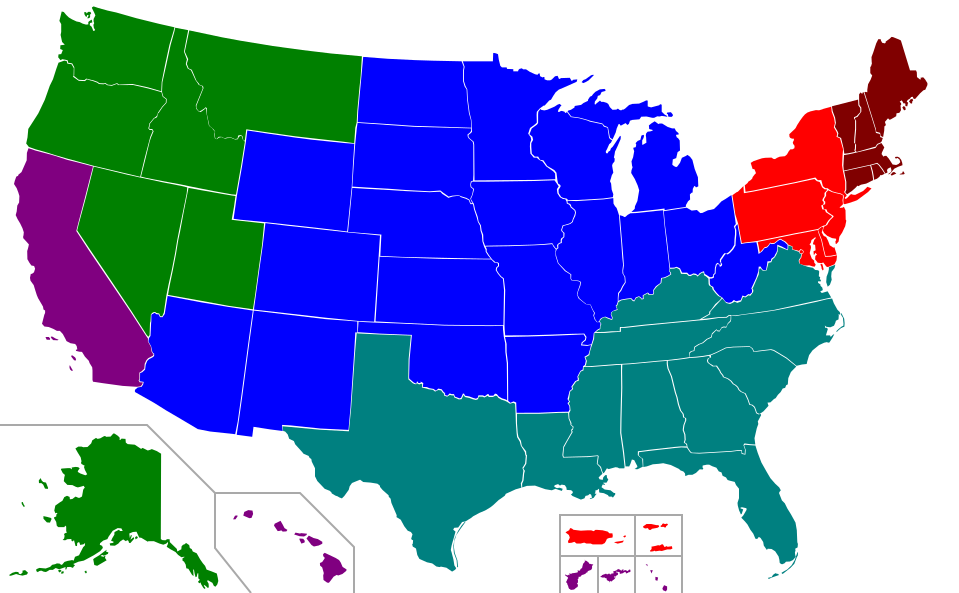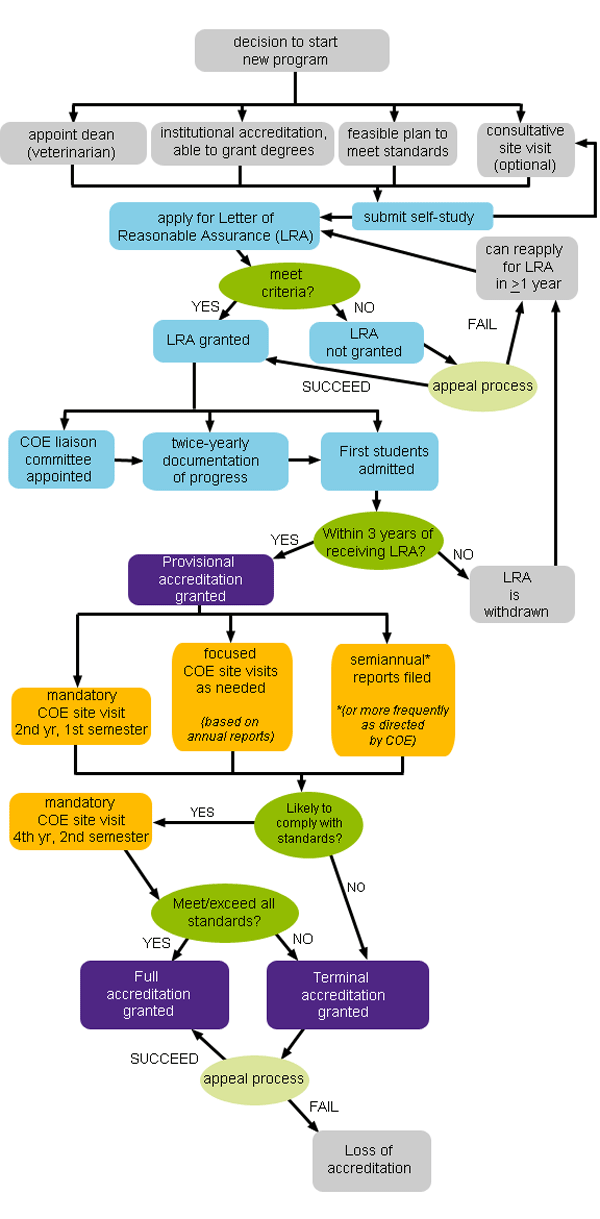The Private Education Racket: Chapter 4
This is the fourth chapter in my series on private higher education in the United States. To learn about my background and on other important issues relating to this industry, check out these earlier posts:
- How Higher Education Became So Dysfunctional
- Chapter 1: The Intro
- Chapter 2: Admissions
- Chapter 3: Retention
In this installment, I'm going to move away from institutional practices and focus more on the higher education ecosystem and its relationship with the federal government. Warning: you may come across some jargon and an annoying use of acronyms. I will try to minimize their use, but know that they are included to explain the industry as a whole and to alleviate the burden of repeated reading of excessively long names. It is also worth noting that my background is only in one region of the US and with two specialized bodies. I'll explain this in greater depth later in this post, but basically I'm owning to a somewhat limited experiential background. Being an eager beaver, I worked closely with my compatriots of various institution types and in every region, so I'm not completely off base.
.png)
Most who have any experience with college know that the US Department of Education (DOE) is responsible for regulating higher education. However, few realize the DOE has two primary means for asserting its dominance: accreditation and the Integrated Postsecondary Education Data System, also known as IPEDS.
IPEDS is an annual reporting system required of all institutions receiving Title IV (student loan; Title IV is the name of the actual regulation) funding. Throughout the year, institutions must report:
- Institutional characteristics (mission, distance ed, services and programs, athletics, branch campuses, etc.)
- Enrollment (cumulative for 12 month)
- Fall enrollment (snapshot of enrollment)
- Financial aid
- 4 and 6 year graduation rates (includes students who transferred out and graduated at another institution)
- Completion rate (students who graduated from the reporting institution)
- Admissions (how institutions select students, e.g. SAT/ACT scores, portfolio review, etc.)
- Human resources
- Academic libraries (holdings and budget)
- Outcomes measures
IPEDS, the National Student Loan Data System (basically a more comprehensive financial aid version of IPEDS), and data from the Treasury are largely what comprise the College Scorecard, an Obama-era data set that informs consumers about their current or potential institution. It's a useful tool that can empower or disable those who use it as it lacks context and is based on the assumption that all students should fit within an education box.
In addition to direct reporting to the DOE via IPEDS, the federal government passive aggressively leverages the accreditation system, which for their purposes is comprised of:
- National accrediting bodies (e.g., Association for Biblical Higher Education, Council on Occupational Education, Distance Education Accrediting Commission, etc.)
- Specialized accrediting bodies (e.g., Accreditation Commission for Midwifery Education, Commission on Collegiate Nursing Education, National Council for Accreditation of Teacher Education, etc.)
- Regional accrediting bodies (see image)

These bodies serve as a means for federal compliance, provide quality assurance, and oftentimes are the "Title IV Gatekeepers," which means institutions must have at least one Gatekeeper accrediting body in order to be eligible to receive student loan dollars. However, not all accrediting bodies are created equal. Many of them must have their own accreditation with the Council for Higher Education Accreditation in order for the DOE to recognize them, which is kind of like the insurance industry in that insurance companies are covered by reinsurers. There are also accrediting bodies that have no industry credibility and have come under scrutiny along with predatory for-profit institutions and diploma mills.
The differences in types are based on geography versus the type of institution, and institutions can have one or both regional and national as well as specialized for specific programs. Some specialized accreditors, such as the National Association of Schools of Art and Design (with which I'm most familiar) serve as Gatekeepers while others do not.* Specialized (aka programatic) accreditors typically only accredit the individual programs of an institution that fall within their purview, such as music or business. Only institutions that focus exclusively on a discipline can have a specialized accreditor serve as its Gatekeeper, or institutional accreditor.
Confused yet? It only gets worse.
Requirements differ by accrediting body, meaning that two regional accreditors that are both enforcing federal law will have different processes and standards. The only real consistencies other than their function are:
- Substantive Change Applications
- Self Study, i.e., the mandatory internal audit
- Monitoring reports (if institutions are found to almost be breaking the rules)
- Probationary reports (if institutions really messed up and might lose their accreditation)
Each accreditor has different criteria for what does/not constitute a substantive change, but their self studies are largely the same in structure. The self study is an 18-24 month process every 10 years (for those in good standing, depending on your region) by which institutions conduct an internal audit. They have to submit a written narrative, create a comprehensive evidence file, and host visiting reviewers for 1.5-3 days. In other words, every ten years or so institutions must conduct thorough internal research to determine if they meet their accrediting body's standards, provide evidence of their compliance, and then convince strangers that they didn't lie. The purpose of this is to ensure best practices are followed, provide transparency and ethical practices, and provide growth opportunities for institutions.
But here's the thing, it doesn't work. Accreditors started as membership associations whose standards would help set some institutions apart from others. Since the DOE hijacked these organizations, their processes have become exhaustively bureaucratic and expensive. Some accreditors exacerbate the problem as illustrated with the National Association for Schools of Art and Design (NASAD), which to this day (September 12, 2017) still only accepts self studies (which average 100+ pages) and evidence files in hardcopy. That's right. Every institution accredited by NASAD is required to print and snail mail hundreds of pages of narrative and evidence. For those, like myself, who were stuck in the Higher Learning Commission (HLC), this further complicates maintaining compliance portfolios as it only accepts self studies via its online portal, which provides no flexibility in terms of format or outline. This is just my own experience of the practical bureaucracy of accreditation, and does not even touch upon conflicting accreditation standards, overly prescriptive learning outcomes, or that institutions with decades of good standing have to dedicate expensive manpower towards applications for programs that fall within their purview (such as crafts or comics at an arts college). If you don't believe me, here's an example of an accreditation flow chart from the American Veterinary Medical Association to help illustrate.

Now, to be clear, this is not an argument against institutions being held to a high standard, but instead an argument that the process by which they demonstrate their quality must be simplified because the cost of accreditation's bureaucracy ultimately falls to the students. Some institutions spend tends of thousands of dollars on software to help them maintain their compliance portfolios while others pay someone (me) high salaries to manage them along with other high-level responsibilities (think assessment or faculty development).

In addition to costly red tape, accreditors are placing more emphasis on the same metrics associated with the college scorecard. It makes sense considering they're responsible for ensuring institutions meet federal standards. Unfortunately, it overemphasizes retention and graduation rates rather than teaching efficacy and curricular relevance, and further enforces education as a value-add towards employment rather than the pursuit of knowledge. And while accreditors do require assessment of teaching and learning, I've seen countless cases of institutions doing little to no assessment and passing their self studies with flying colors. Some don't take it seriously or deliberately try to not assess, yet their accreditation stands. There are also countless anecdotes about larger and financially affluent institutions essentially buying their accreditation by providing additional honoraria to reviewers and/or providing lavish accommodations during site visits.
In sum, with over $1trillion of student loan debt, colleges are obliged to maintain high standards of teaching and learning, and there should be a system in place to make sure that happens.** But the current system is broken and places too great an emphasis on education for employment sake. Institutions are disincentivized to offer programs that would educate people towards the betterment of society, pursuit of the arts, or pursuing a more peaceful and just world. Instead they create programs per accreditors' standards based on potential employment and debt repayment rates, which they report on annually to the DOE.*** And during a time of fake news and mass distrust of higher learning, there appears to be no argument to support programs that might result in greater empathy, critical thinking, and metacognition. Furthermore, supporting this broken system costs more than $100K annually for each institution and that money comes from many of you, the poor souls who wanted to better your lives, believing that higher education was the only way to do it.
Think you can improve the system? I'd love to hear your ideas.
*This only means that the institution goes through their approved specialized accrediting body to submit required information to the DOE to maintain its Title IV status in lieu of its regional accrediting body.
**Otherwise you get Corinthians, Everests, or ITT Techs.
*** See Chapter 3 to see how faculty grading and grade inflation play a role in this.
Great post,great idea @spurious-claims !..we've been stuck to the systems of our colonial masters for way too long in Nigeria!..maybe our leaders will see this post,maybe something will change soon,i hope!
I'm sorry that your country is suffering so many of our mistakes.
All as a result of government intervention and cheap subsidized loans. It's such a shame that youth of today will be shackled with such a debt in circumstances where it isn't easy to get a job at all @spurious-claims
It's true, and wouldn't it be better for people to be able to pursue their interests if they're going to be saddled with debt? I studied anthropology and almost 10 years later, I'm still paying off my loans, but I don't regret what I studied because it gave me skills that'll last through my life.
There's so many layers of bullshit in accreditation, it makes my head spin.
And every layer comes with a fee from the institution!
quality content. followed and upvoted
Thanks!